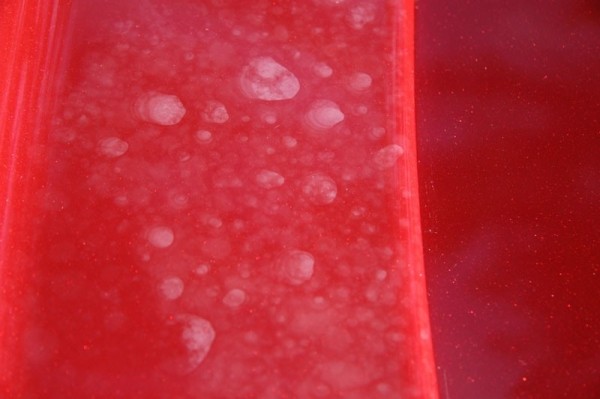Rich Thompson
New member
- Apr 3, 2020
- 9
- 0
Hi folks. I am working on my all original 1966 Chevrolet Corvair Monza with its original single stage, lacquer paint.
The color is called Danube Blue. It is a very dark blue with small metallic flake (can almost look black in certain light). I have been using Mike Phillips method of the Meguiars #7 multiple soaking method in stages with a terry cloth towel. It has brought back a lot of depth and shine to the paint and even helped some areas that were a little crazed as well.
My issue is this: there are some spots on the car which have some what i think is staining. Areas where something has dropped onto the paint in its life that have left lighter stained spots and/or streaks. It doesn't look like brake fluid or anything of that nature; just something that was on the paint (maybe acid rain, tree sap, soda, etc.?) and lightened the spot on which it sat.
View attachment 69152
The #7, which improves the look of those spots a bit, does not make them really go away. Souveran wax helps to hide them a little, but not much.
Being careful not to remove too much paint, is there any ideas that some one may have out there to help remove or greatly improve the areas that have these stains?
I realize I may need to be stuck with these, yet someone out there may have some ideas or methods out there that I may not be aware of of removing/improving them.
Help!
Thanks,
Rich
The color is called Danube Blue. It is a very dark blue with small metallic flake (can almost look black in certain light). I have been using Mike Phillips method of the Meguiars #7 multiple soaking method in stages with a terry cloth towel. It has brought back a lot of depth and shine to the paint and even helped some areas that were a little crazed as well.
My issue is this: there are some spots on the car which have some what i think is staining. Areas where something has dropped onto the paint in its life that have left lighter stained spots and/or streaks. It doesn't look like brake fluid or anything of that nature; just something that was on the paint (maybe acid rain, tree sap, soda, etc.?) and lightened the spot on which it sat.
View attachment 69152
The #7, which improves the look of those spots a bit, does not make them really go away. Souveran wax helps to hide them a little, but not much.
Being careful not to remove too much paint, is there any ideas that some one may have out there to help remove or greatly improve the areas that have these stains?
I realize I may need to be stuck with these, yet someone out there may have some ideas or methods out there that I may not be aware of of removing/improving them.
Help!
Thanks,
Rich

